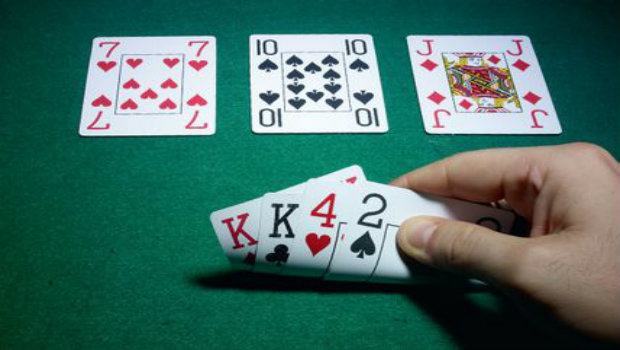Players, even good ones, who are used to Texas Holdem often make errors when moving over to Pot-Limit Omaha Poker. This article covers 5 of the most common mistakes and key differences between the two forms of poker – to help make your transition as profitable as possible. We recommend our complimentary eBook – ‘Tune In, Bet Pot, Cash Out' – for those players making the transition from Texas Holdem to Pot-Limit Omaha. You'll find instructions on getting your copy at the bottom of this article!
It is possible to find a no-limit Omaha game online, but it is a rare occurrence. Making Hands: Omaha generates a lot of action as compared to Texas Holdem because of the value each hand represents, and a player's style of reacting to them. A pair of aces is a premium hand in Holdem and is also a strong hand in Omaha. Let's begin Omaha vs Hold'em. Number of Cards. First of all, the biggest difference between Omaha and Texas Hold'em is the number of cards you start with. Texas Holdem is played with just 2 whilst Omaha is played with 4. This is a massive difference as you're now playing with 9 cards instead of the 7. Omaha and Texas Hold'em are two very similar, yet very different, poker games. There are a lot of similarities between the games, but the real differences can be found in the strategies that are applied. As a quick example, pocket aces are the preflop nuts and will often win at showdown in Hold'em, while they are easily crushed in Omaha.
Holdem vs Omaha #1 – High Pairs
While aces are a strong hand in Pot-Limit Omaha they are very unlikely to win a pot unimproved against more than a single opponent. Players new to PLO Poker often over-value A-A-x-x hands. In fact the mark of a good Omaha player is whether they are capable of getting away from high-pair hands when behind!
Unless you can get more than half of your stack into the pot pre-flop you need to be careful with those aces. The danger is that your betting ‘tells the table' what you hold at the same time as giving them the correct implied-odds to outdraw you. High pairs increase dramatically in strength with ‘backup' in the form of suited cards or straight possibilities.

Holdem vs Omaha #2 – Combinations
Holdem players often overlook the strength of coordinated cards pre-flop, for example 4-5-6-7 with 2 suits is actually 49.3% to win all-in pre-flop against A-A-9-2 with 4 suits!
Looking at your hand in terms of the ‘live' combinations can help. With 4 hole card, 2 of which must be used at showdown with 3 from the board, you have 6 possible ‘Holdem Hands' available to hit the flop. The more of these 2-card combinations that you have working for you – particularly with the potential to hit the nuts – the better your hand.
Holdem vs Omaha #3 – No Big Pre-Flop Favorites
This follows on from #1 and #2 above, there are no huge favorites pre-flop in pot-limit Omaha, even the strongest starting hands will rarely be more than a 65% favorite against a single opponent – and in many cases the difference is 5% or less.
Having less of an edge pre-flop, combined with the pot-limit betting structure, make Omaha more of a post-flop game. The small early bets in PLO, when compared to the potential bet sizes by the river, make this a game of implied-odds, draws and post-flop maneuvering.
Holdem vs Omaha #4 – Draws And Made Hands
In Holdem a made hand will usually be a strong favorite against a draw on the flop (the exception being a flush draw + over-cards against a single pair). In Omaha it is possible that a draw is as much as a 70% favorite after the flop against a made hand as strong as trips! Imagine an over-pair A-A-x-x on the following flop 5-7-8 with 2 hearts. What percentage chance would you give an opponent with a draw such as 9-10-J-Q with 2 hearts? The answer is that the draw would be 69% to win against 31% for the aces.
The same scenario but with a single change – we will swap the 5 for an ace, giving you trips! The draw is still a favorite, even with a huge hand and full house re-draws. Now the percentages are 55% for the draw and 45% for the aces. These statistics are surprising to many Holdem players – the key difference is in the number of outs available to ‘wrap around' straight and flush draw combinations.
Holdem vs Omaha #5 – Position
Position is an important factor in any poker game – in PLO its benefits are magnified. This is for two reasons. Firstly the nature of pot-limit betting means that hands are often played over several streets – nobody can easily ‘price out' draws on the flop as is often a good strategy with a strong but vulnerable Holdem hand.
Omaha Vs Holdem Profitability Ratio
Secondly we come back to the draws vs made hands match-up. Your options for playing either hand are wider in Pot Limit Omaha, with a made hand you can call from position, becoming a strong favorite when a ‘safe' card comes on the turn. With a draw you get to choose whether to take a free card or semi-bluff from last position – depending on the tendencies of opponents this can put you in a very profitable situation.
Omaha Vs Holdem Profitability Odds
To summarize, while the two games share many factors in common there are some major strategy differences that need to be taken into account. The many articles here at Omaha Planet will give Holdem players the information required for a profitable transition. We also identify the fishiest Omaha Poker Sites to get you off to a flying start. You can also check out our dedicated article for an in-depth look at the subject of Domination In Pot Limit Omaha.
